Journal Articles
Swartz, A., Skelton, A. E., Mather, G., Bosten, J. M., Maule, J., Franklin, A. (2024). The perceived beauty of art is not strongly calibrated to the statistical regularities of real-world scenes. Scientific Reports, 14(1), 19368.https://doi.org/10.1038/s41598-024-69689-6
Pavan, A., Contillo, A., Ghin, F, Donato, R., Foxwell, M.J., Atkins, D.W., Mather, G., Campana, G. (2021) Spatial and temporal selectivity of translational Glass patterns assessed with the tilt after-effect. i-Perception, 12 (5).https://doi.org/10.1177/20416695211017924
Nguyen, T.N., Vuong, Q.C., Mather, G., Thornton, I.M. (2021) Ensemble coding of crowd speed using biological motion. Attention, Perception, & Psychophysics., 83 (3), 1024-1035. PDF
https://doi.org/10.3758/s13414-020-02163-3
Mather, G. (2020) A step to VAR: the vision science of offside calls by Video Assistant Referees. Perception, 49(12), 1371-1374. PDF
https://doi.org/10.1177/0301006620972006
Mather, G., Breivik, S. (2020) Is the perception of intent by association football officials influenced by video playback speed? Royal Society Open Science, 7, 192026. PDF
Mather, G. (2020) Aesthetic image statistics vary with artistic genre. Vision, 4(1), 10. PDF
Pavan, A., Contillo, A., Ghin, F., Foxwell, M.J., Mather, G. (2019) Limited attention diminishes spatial suppression from large field Glass patterns. Perception, 48(4), 286-315. https://doi.org/10.1177/0301006619835457
Pavan, A., Ghin, F., Contillo, A., Milesi, C., Campana, G., Mather, G. (2019) Modulatory mechanisms underlying high-frequency transcranial random noise stimulation (hf-tRNS): a combined stochastic resonance and equivalent noise approach. Brain Stimulation, 12 (4), 967-977. https://doi.org/10.1016/j.brs.2019.02.018
Lee, R.J., Mather, G. (2019) Chromatic adaptation from achromatic stimuli with implied colour. Attention, Perception, & Psychophysics, 81 (8), 2890-2901. https://doi.org/10.3758/s13414-019-01716-5
Ghin, P., Pavan, A., Contillo, A., Mather, G. (2018) The effects of high-frequency transcranial random noise stimulation (hf-tRNS) on global motion processing: an equivalent noise approach. Brain stimulation, 11(6), 1263-1275. https://doi.org/10.1016/j.brs.2018.07.048.
Mather, G., Parsons, T. (2018) Adaptation reveals sensory and decision components in the visual estimation of locomotion speed. Scientific Reports, 8(1), 13059. https://doi.org/10.1038/s41598-018-30230-1.
Mather, G. (2018) Visual image statistics in the history of Western Art. Art & Perception, 8. https://doi.org/10.1163/22134913-20181092
Mather, G., Sharman, R.J., Parsons, T. (2017) Visual adaptation alters the apparent speed of real-world actions. Scientific Reports, 7, 6738. PDF
Pavan, A., Gall, M.G., Bimson, L.M., Ghin, F., Mather, G. (2017) The interaction between orientation and motion signals in moving oriented Glass patterns. Visual Neuroscience, 34, E010.
Pavan, A., Ghin, F., Donato, R., Campana, G., Mather, G. (2017) The neural basis of form and form-motion integration from static and dynamic translational Glass patterns: A rTMS investigation. NeuroImage, 157, 555-560.
Mather, G., & Lee, R. (2017) Turbine Blade Illusion. i-Perception, 8 (3), 1-5. PDF
Mather, G., Battaglini, L., & Campana, G. (2016) TMS reveals flexible use of form and motion cues in biological motion perception. Neuropsychologia. http://dx.doi.org/10.1016/j.neuropsychologia.2016.02.015.
Mather, G., Sharman, R.J. (2015) Decision-level adaptation in motion perception. Royal Society Open Science, 2 (12), 150418. PDF
Mather, G. (2014) Artistic adjustment of image spectral slope. Art & Perception, 2 (1-2). pp. 11-22. PDF
Pavan, A., Contillo, A., Mather, G. (2014) Modelling fast forms of visual neural plasticity using a modified second-order motion energy model. Journal of Computational Neuroscience 37, 493-504. PDF
Pavan, A., Marotti, R. B., & Mather, G. (2013). Motion-form interactions beyond the motion integration level: Evidence for interactions between orientation and optic flow signals. Journal of vision, 13(6). PDF
Mather, G., Pavan, A., Bellocosa Marotti, R., Campana, G., & Casco, C. (2013) Interactions between motion and form processing in the human visual system. Frontiers in Computational Neuroscience, 7, Article 65. PDF
Pavan, A., Contillo, A., & Mather, G. (2013). Modelling adaptation to directional motion using the Adelson-Bergen energy sensor. PLOS ONE, 8(3), e59298. PDF
Mather, G., Pavan, A., Bellacosa, R., Casco, C. (2012) Psychophysical evidence for interactions between visual motion and form processing at the level of motion integrating receptive fields. Neuropsychologia, 50(1), 153-159. PDF
Mather, G. (2012) Aesthetic judgement of orientation in modern art. i-Perception, 3, 18-24. PDF
Pavan, A., Casco, C., Mather, G., Bellacosa, R., Cuturi, L.F., Campana, G. (2011) The effect of spatial orientation on detecting motion trajectories in noise. Vision Research, 51, 2077-2084. PDF
Challinor, K.L., Mather, G. (2010) A motion-energy model predicts the direction discrimination and MAE duration of two-stroke apparent motion at high and low retinal illuminance. Vision Research, 50, 1109-1116. PDF
Mather, G. (2010). Head – body ratio as a visual cue for stature in people and sculptural art. Perception, 39(10), 1390-1395. PDF
Mather, G. Challinor, K. L. (2009). Psychophysical properties of two-stroke apparent motion. Journal of Vision, 9(1):28, 1-6. PDF
Mather, G., Pavan, A. (2009) Motion-induced position shifts occur after motion integration. Vision Research, 49, 2741-2746. PDF
Mather G (2008) Perceptual uncertainty and line-call challenges in professional tennis. Proceedings of the Royal Society Series B, 275, 1645-1651. PDF
Pavan A, Mather G (2008) Distinct position assignment mechanisms revealed by cross-order motion. Vision Research, 48, 2260-2268. PDF
Mather G, Pavan A, Campana G, Casco C (2008) The motion after-effect reloaded. Trends in Cognitive Sciences, 12, 481-487. PDF
Mather G (2006) Two-stroke: a new illusion of visual motion based on the time course of neural responses in the human visual system. Vision Research, 46, 2015-2018. PDF
Mather G, Daniell AK (2005) No effect of spatial phase randomisation on direction discrimination in dense random element patterns. Vision Research, 45, 759-764. PDF
Mather G, Smith DRR (2004) Combining depth cues: effects upon speed of performance in a depth-ordering task. Vision Research, 44, 557-562. PDF
Mosimann UP, Mather G, Wesnes KA, O’Brien DM, Burn DJ, McKeith IG (2004) Visual perception in Parkinson disease dementia and dementia with Lewy bodies. Neurology, 63, 2091-2096. PDF
Mather G, Smith DRR (2002) Blur discrimination and its relation to blur-mediated depth perception. Perception, 31, 1211-1219. PDF
Mather G (2001) Object-oriented models of cognitive processing. Trends in Cognitive Sciences, 5, 182-184. PDF
Anstis S, Smith DRR, Mather G. (2000) Luminance processing in apparent motion, vernier offset, and stereoscopic depth. Vision Research, 40, 657-675. PDF
Mather G. (2000) Integration biases in the Ouchi and other visual illusions. Perception, 29, 721-727. PDF
Mather G, Smith DRR. (2000) Depth cue integration: stereopsis and image blur. Vision Research, 40, 3501-3506. PDF
Brooks K, Mather G. (2000) Perceived speed of motion in depth is reduced in the periphery. Vision Research, 40, 3507-3516. PDF
Mather G, Murdoch L (1999) Second-order processing of four-stroke apparent motion. Vision Research, 39, 1795-1802. PDF
Anstis S, Verstraten F, Mather G (1998) The motion after-effect. Trends in Cognitive Sciences, 2, 111-117. PDF
Mather G, Murdoch L (1998) Evidence for global motion interactions between first-order and second-order stimuli. Perception, 27, 761-767. PDF
Mather G, Murdoch L. (1997) Order-specific and non-specific motion responses in the human visual system. Vision Research, 37, 605-611. PDF
Mather G (1997) The use of image blur as a depth cue. Perception, 26, 1147-1158. PDF
Mather G (1996) Image blur as a pictorial depth cue. Proceedings of the Royal Society, Series B, 263, 169-171. PDF
Mather G, Tunley H. (1995) Temporal filtering enhances direction discrimination in random dot patterns. Vision Research, 35, 2105-2116. PDF
Mather G, Tunley H. (1995) Motion detection in interleaved random dot patterns: evidence for a rectifying nonlinearity preceding motion analysis. Vision Research, 35, 2117-2125. PDF
Mather G, Anstis S M (1995) Second-order texture contrast resolves ambiguous apparent motion. Perception, 24, 1373-1382. PDF
Morgan M, Mather G. (1994) Motion detection in two-frame sequences with differing spatial frequency content. Vision Research, 34, 197-208. PDF
Mather G, Murdoch L (1994) Gender discrimination in biological motion displays based on dynamic cues. Proceedings of the Royal Society, Series B, 258, 273-279. PDF
Mather G, West S. (1993) Evidence for second-order motion detectors. Vision Research, 33, 1109-1112. PDF
Mather G, West S. (1993) Recognition of animal locomotion mediated by point-light displays. Perception, 22, 759-766. PDF
Mather G, Radford K, West S (1992) Low-level visual processing of biological motion. Proceedings of the Royal Society, Series B, 249, 149-155. PDF
Mather G. (1991) First-order and second-order visual processes in the perception of motion and tilt. Vision Research, 31, 161-167. PDF
Mather G, Moulden B, O'Halloran A. (1991) Polarity specific adaptation to motion in the human visual system. Vision Research, 31, 1013-1019. PDF
Mather G, O'Halloran A, Anstis S. (1991) The spacing illusion: a spatial aperture problem? Perception, 20, 387-392. PDF
Mather G. (1990) Computational modelling of motion detectors: responses to two-frame displays. Spatial Vision, 5, 1-14.
Mather G. (1989) The role of subjective contours in capture of stereopsis. Vision Research, 29, 143-146
Mather G. (1989) Early motion processes and the Kinetic Depth Effect. Quarterly Journal of Experimental Psychology, 41, 183-198.
Cavanagh P, Mather G. (1989) Motion: the long and short of it. Spatial Vision, 4, 103-129. PDF
Mather G. (1988) Temporal properties of apparent motion in subjective figures. Perception, 17, 729-736.
Mather G. (1987) The dependence of edge displacement thresholds on edge blur, contrast, and displacement distance. Vision Research, 27, 1631-1637.
Anstis S, Cavanagh P, Maurer D, Lewis T, MacLeod D, Mather G. (1986) Computer generated screening test for colour blindness. Color Research and Applications, 11, S63-S66.
Mather G, Morgan M J. (1986) Irradiation: implications for theories of edge localization. Vision Research, 26, 1007-1015.
Anstis S, Mather G (1985) Effects of luminance and contrast on direction of ambiguous apparent motion. Perception, 14, 167-179.
Mather G, Cavanagh P, Anstis S (1985) A moving display which opposes short-range and long-range signals. Perception, 14, 163-166.
Mather G. (1985) Apparent motion from luminance change: further comments on candidate mechanisms. Vision Research, 25, 2005-2006.
Cavanagh P, Anstis S, Mather G (1984) Screening for colour blindness using optokinetic nystagmus. Investigative Ophthalmology and Visual Science, 25, 463-466.
Morgan M, Mather G, Moulden B, Watt R (1984) Intensity-response non-linearities and the theory of edge localisation. Vision Research, 24, 713-720.
Mather G. (1984) Luminance change generates apparent movement: implications for models of directional selectivity in the human visual system. Vision Research, 24, 1399-1405.
Moulden B, Renshaw J, Mather G (1984) A two-filter channel for flicker in the human visual system. Perception, 13, 387-400.
Mather G, Moulden B (1983) Thresholds for movement direction: two directions are less detectable than one. Quarterly Journal of Experimental Psychology, 35, 513-518.
Mather G, Moulden B (1980) A simultaneous shift in apparent direction: further evidence for a 'distribution shift' model of direction coding. Quarterly Journal of Experimental Psychology, 32, 325-333.
Mather G. (1980) The movement after-effect and a distribution shift model of direction coding. Perception, 9, 379-392. PDF
Moulden, B., Mather, G. (1978) In defense of a ratio model for motion detection at threshold. Quarterly Journal of Experimental Psychology, 30, 505-520.
Conference Presentations
Mather, G., Cavanagh, P.(2024) Changes in pupil diameter can cause illusory visual motion. Perception, (1 Suppl) 53.
Cavanagh, P., Mather, G. (2024) A new explanation for the Fraser-Wilcox illusion. Journal of Vision, 24, 546.
Mather, G. (2022) 1/f colour statistics of visual art. Art & Perception, 10.
Nguyen, T., Vuong, Q.C., Mather, G., Thornton, I.M. (2021) Ensemble coding of crowd speed using biological motion. SVG annual general meeting.
Mather, G., Breivik, S. (2019) Does slow-motion replay introduce bias in refereeing decisions? Perception (1 Suppl), 48.
Nguyen, T., Vuong, Q.C., Mather, G., Thornton, I.M. (2019) Estimating the average speed of a crowd using intact and scrambled biological motion. Perception (1 Suppl), 48.
Felisberti, F.M., Mather, G. (2019) The perception of ugliness in urban environments through photographs of nature and man-made artefacts. Art & Perception, 7.
Mather, G., Lee, R.J. (2018) Sensation and perception in visual art. Art & Perception, 6.
Mather, G. (2018) The fractal dimension of modern art. Art & Perception, 6.
Georgeson, M., Mather, G., Lee, R.J. (2018) The motion aftereffect without motion: how adaptation to non-directional flicker creates a directional aftereffect in the motion system. Perception (1 Suppl.), 47.
Thornton, I.M., Vuong, Q.C., Mather, G. (2018) Influence of crowd behaviour on estimates of biological motion speed. Perception (1 Suppl), 47.
Lee, R., Mather, G. (2017) After-effects from implied colours of natural objects. Perception (1 Suppl), 46.
Mather, G., Parsons, T. (2017) Adaptation to the locomotion speed of point-light walkers. Perception (1 Suppl), 46.
Ghin, F., Pavan, A., Mather, G. (2017) Investigation of high-frequency transcranial random noise stimulation (hf-tRNS) mechanism on visual motion perception: A stochastic resonance approach. Perception (1 Suppl), 46.
Mather, G. (2017) Visual statistics of large samples of Western artworks. Art & Perception, 5 (4). 62
Mather, G., Miller, M., Pepperell, R. (2016) Discrimination of blur and local disorder in photographic and artistic images. Visual Science of Art Conference, Barcelona, Spain, 26-27th August 2016.
Ghin, F., Mather, G. Pavan, A. (2016) Effects of different electrical brain stimulations over V5/MT on global motion processing. Perception (1 suppl), 45, S243.
Pavan, S., Foxwell, M., Mather, G. (2016) Effects of attention on form perception and form-motion integration from static and dynamic Glass patterns. Perception (1 suppl), 45, S103.
Mather, G., Sharman, R.J., Parsons, T. (2016) Norm-based coding of human movement speed? Perception (1 suppl), 45, S369.
Mather, G., Sharman, R.J. (2016). Adaptation to human locomotion speed. Journal of Vision, 16(12), 397.
Mather, G., Battaglini, L., Campana, G. (2015) TMS reveals dual processing routes for biological motion processing. Applied Vision Association Christmas meeting, London, December 2015.
Sharman, R.J., Mather, G. (2015) Is adaptation to human motion necessary to change the apparent speed of locomotion? Perception (1 suppl), 44, 235.
Mather, G., Sharman, R.J. (2015) Changes in the apparent speed of human locomotion: Norm-based coding of speed. Perception (1 suppl), 44, 231.
Mather, G. (2015) The depiction of visual space in Canaletto's Venetian vedute. Visual Science of Art Conference, Liverpool, UK, 22-23rd August 2015.
Mather, G., Sharman, R.J. (2014) The effect of implied motion on the motion after-effect. Perception (1 suppl), 43, 65.
Mather, G. (2014) Fractal properties and attractiveness ratings of generative abstract art. Visual Science of Art Conference, Belgrade, Serbia, August 2014.
Mather, G., Bellacosa, R., Pavan, A. (2012) Motion-form interactions beyond the motion integration level: psychophysical evidence for interactions between orientation and optic flow signals. Perception (1 suppl), 41, 179.
Mather, G. (2012) Image preference and visual statistics. Visual Science of Art Conference, Alghero, Italy, September 2012.
Mather, G., Pavan, A., Contillo, A. (2012) Modelling adaptation using the Adelson-Bergen energy sensor. Journal of Vision, 12(9), 763.
Mather, G., Pavan, A., Bellicosa, R. (2011) Static gratings modulate motion after-effect duration but not direction. Applied Vision Association Christmas Meeting, York, December 2011.
Mather, G., Battaglini, L. (2011). A simple model of position effects in apparent motion perception. Perception (1 suppl), 40, 176.
Pavan, A., Mather, G., Bellacosa, R., Casco, (2011) Psychophysical evidence for interactions between visual form and motion signals during motion integration in cortical area MT. Perception (1 suppl), 40, 26.
Mather, G., Challinor, K. (2011) Psychophysical evidence for spatiotemporal tuning in human motion sensing receptive fields. Asia-Pacific Conference on Vision, Hong Kong, July 2011.
Mather, G. (2010) Body proportion as a cue for the perception of human stature. Applied Vision Association Easter Meeting, Liverpool, April 2010.
Mather, G., Challinor, K. (2010) Psychophysical tests of the motion energy model. Perception, 39 (1 suppl), 152.
Pavan, A., Casco, C., Mather, G., Campana, G. (2009) Two mechanisms for detecting spatial contours defined by motion. Perception, 38 (1 suppl), 42.
Challinor, K., Mather, G. (2009) Biphasic temporal response of low-level motion detectors in human vision revealed by a direction discrimination task. Perception, 38 (1 suppl), 8.
Pavan, A., Mather, G. (2008) Distinct position assignment mechanisms revealed by cross-order motion. Perception, 37, S68. Mather, G., Pavan, A. (2008) Motion-induced position shifts occur after motion integration. Perception, 37 (1 suppl), 83.
Mather, G. (2007) Two-stroke apparent motion is abolished at low luminance. Perception, 36 (1 suppl), 36.
Mather, G. (2006) Where is the sense in low-level motion? Perception, 35 (1 suppl), 69.
Mather, G. (2006) Motion after-effects from two-stroke apparent motion. Journal of Vision, 6(6), 549.
Rogers, J., Hamilton, R., Mather, G. (2005) Motion perception in art and design research. Perception, 34 (1 suppl), 90.
Mather, G., Hamilton, R., Rogers, J. (2005) Perception of phase wave motion. Perception, 34 (1 suppl), 12.
Daniell, A., Mather, G. (2003) Dmax in the Fourier domain. Perception, 32 (suppl), 103.
Thompson, B., Mather, G. (2003) Discriminating the biological motion of animals. Journal of Vision, 3(9), 529.
Mather, G., Daniell, A. (2003) Direction discrimination performance measured using a Fourier domain signal-to-noise paradigm. Journal of Vision, 3(9), 283.
Thompson, B., Mather, G. (2002) The role of motion cues in the recognition of animals. Perception, 31 (1 suppl), 120.
Daniell, A., Mather, G. (2002) The spatiotemporal autocorrelation spectrum bridges energy-based and feature-based accounts of motion. Perception, 31 (1 suppl), 136.
Mather, G., Daniell, A. (2002) Separating energy-based and feature-based accounts of motion discrimination in random-dot kinematograms. Perception, 31 (1 suppl), 99.
Daniell, A., Mather, G. (2001) Modelling random block kinematogram performance with edge statistics. Invest. Ophthalm. Vis. Sci.Supp., 42, 870.
Mather, G., Thompson, B. (2001) Stationary pedestals during adaptation reduce motion after-effect duration. Invest. Ophthalm. Vis. Sci.Supp., 42, 532.
Nakayama, M., Mather, G. (2000) Object recognition in the mental rotation of line-drawn and dot-defined objects. Perception, 29 (1 suppl), 115.
Mather, G. (2000) Blur discrimination and its relation to blur-mediated depth perception. Peception, 29 (1 suppl), 120.
Mather, G. (1999) Blur discrimination and its relation to blur-mediated depth perception. Applied Vision Association Christmas Meeting, Birmingnham, December 1999.
Mather, G., Smith, D. (1999) Blur and stereoscopic disparity interactions influence depth perception. Perception, 28 (1 suppl), 131.
Anstis, S., Smith, D., Mather, G. (1998) Linear luminance processing in motion and flicker. Perception, 27 (1 suppl), 51.
Nakayama, M., Mather, G. (1998) Mental Rotation of dot-defined objects. Perception, 27 (1 suppl), 122.
Anstis, S., Smith, D., Mather, G. (1998) Luminance processing in flicker and motion. Invest. Ophthalm. Vis. Sci. Supp. 39.
Mather, G. (1998) Blur-mediated depth cues are available pre-attentively. Invest. Ophthalm. Vis. Sci. Supp. 39.
Mather, G., Murdoch, L. (1996) Second-order four-stroke apparent motion. Invest. Ophthalm. Vis. Sci. Supp. 37, 900.
Mather ,G., Murdoch, L. (1995) Attentional control in direction discrimination tasks. Invest. Ophthalm. Vis. Sci. Supp. 36, 227.
Mather, G., Murdoch, L.(1994) Integration of first-order and second-order motion signals in the human visual system. Perception, 23 (1 suppl), 27.
Mather, G., Tunley, H. (1993) Temporal filtering enhances motion detection. Perception, 22 (1 suppl), 31.
Mather, G. (1993) MAEs from barberpole stimuli. Waterfall Illusion Conference, Falls of Foyers, Scotland, August, 1993.
Mather, G. (1990) Spatial and temporal polarity specificity of motion adaptation. Perception, 19 (1 suppl), 8.
Mather, G. (1988) Models of the motion detector: which ones predict known illusions of movement? Perception, 17 (1 suppl), 350.
Mather, G. (1986) Spatial and temporal determinants of motion discrimination thresholds. Invest. Ophthalm. Vis. Sci. Supp. 27, 344.
Mather, G. (1985) Irradiation: a challenge for theories of edge localisation? Perception, 14 (1 suppl), 30.
Mather, G. (1984) What primitive features are used to detect motion? Perception, 13 (1 suppl), 18.
Mather, G., Cavanagh, P., Anstis, S. (1983) Screening for colour-blindness by making use of optokinetic nystagmus. Perception, 12 (1 suppl), 10.
Anstis, S., Mather, G. (1983) Effects of luminance and contrast on direction of ambiguous apparent motion. Ophthalm. Vis. Sci. Supp. 24, 277.
Books
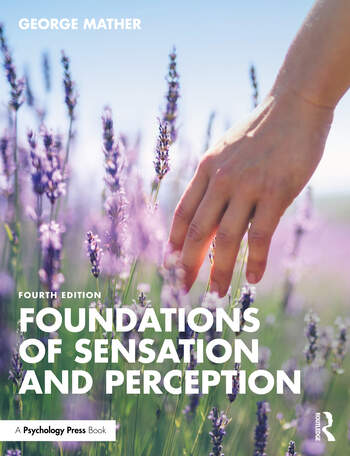 Mather, G. (2023) Foundations of Sensation and Perception. 4th ed.
Mather, G. (2023) Foundations of Sensation and Perception. 4th ed.
Routledge, Abingdon.
 Mather, G. (2021) The Psychology of Art.
Mather, G. (2021) The Psychology of Art.
Routledge, Abingdon.
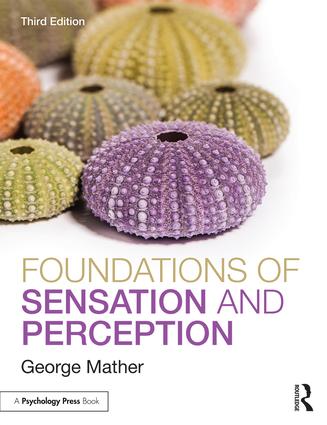 Mather, G. (2016) Foundations of Sensation and Perception. 3rd ed.
Mather, G. (2016) Foundations of Sensation and Perception. 3rd ed.
Routledge, Abingdon.
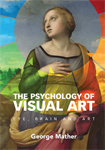 Mather, G. (2014) Eye, Brain, and Art: The Psychology of Visual Art.
Mather, G. (2014) Eye, Brain, and Art: The Psychology of Visual Art.
Cambridge University Press, Cambridge.
 Mather, G. (2011) Essentials of Sensation and Perception.
Mather, G. (2011) Essentials of Sensation and Perception.
Routledge, Hove.
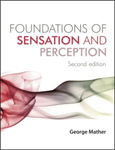 Mather, G. (2009) Foundations of Sensation and Perception. 2nd ed.
Mather, G. (2009) Foundations of Sensation and Perception. 2nd ed.
Psychology Press, Hove.
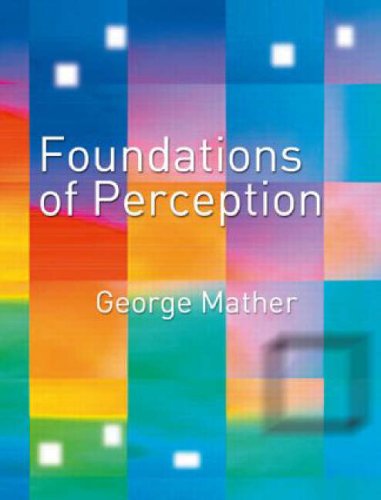 Mather, G. (2006) Foundations of Perception. 1st ed.
Mather, G. (2006) Foundations of Perception. 1st ed.
Psychology Press, Hove.
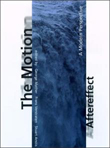 Mather G, Verstraten F, Anstis S. (1998) Eds. The Motion Aftereffect: A Modern Perspective.
Mather G, Verstraten F, Anstis S. (1998) Eds. The Motion Aftereffect: A Modern Perspective.
MIT Press, Cambridge Mass.
Book chapters
Mather, G. (2023) Computational approaches to perception: Beyond Marr’s (1982) computational approach to vision. In: Eysenck, M. & Groome, D. (Eds). Cognitive Psychology: Revisiting the Classic Studies. 2nd ed. Sage.
Mather, G. (2019) Sensation and Perception. In: Davey, G.C. (Ed) Psychology (p. 324-381). Wiley.
Mather, G. (2017) Two-stroke apparent motion. In: Shapiro, A.G., & Todorovic, D. (Eds) The Oxford Compendium of Visual Illusions. (p. 531-535) Oxford University Press, Oxford. PDF
Mather, G. (2015) Computational approaches to perception: Beyond Marr’s (1982) computational approach to vision. In: Eysenck, M. & Groome, D. (Eds). Cognitive Psychology: Revisiting the Classic Studies. 1st ed. Sage.
Mather, G. (2010). Motion perception: Behavior and neural substrate. Wiley Interdisciplinary Reviews: Cognitive Science.
Mather G. Vision. (2008) In: S Davis, W Buskist (Eds) 21st Century Psychology: A Reference Handbook. Sage, Los Angeles.
Mather G (2006) Psychology of motion perception. Entry in Encyclopedia of Cognitive Science Macmillan.
Mather G (2004) Perceptual and cognitive limits on driver information processing. In: PRN Childs, RK Stobart (Eds) Total Vehicle Technology. Professional Engineering Publishing, Bury St Edmunds.
Mather G. (1994) Motion detector models: psychophysical evidence. In: AT Smith, RJ Snowden (Eds) Visual Detection of Motion Academic Press, London.
